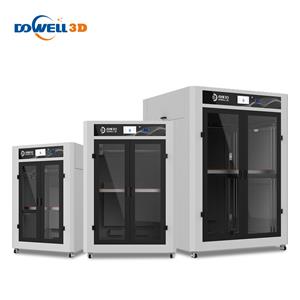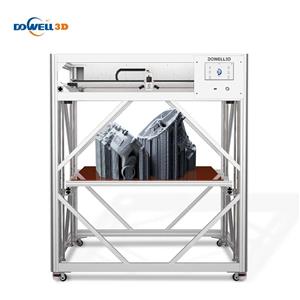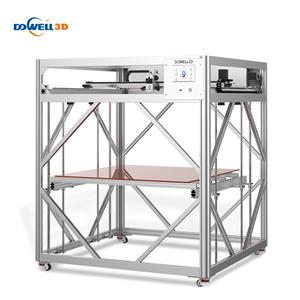3D Printing File Formats: STL, OBJ, AMF, and 3MF
Easy understand 3D Printing File Formats: STL, OBJ, AMF, and 3MF
If you've ever dabbled in 3D printing, you know it's not just about having a great printer. With choosing the right file format for your model. Think of these formats as different languages that your printer understands.
some of the most popular file formats like STL, OBJ, AMF, and 3MF. Each of these formats has its own strengths and quirks, So, why is choosing the right format so important?
It's really like picking the right ingredients for a recipe. The better the ingredients, the tastier the dish. Similarly, the right file format ensures your 3D printer understands exactly what to do, leading to better print quality, efficiency, and a lot less hair-pulling frustration. Let's dive in and discover which format will be your 3D printing sidekick!
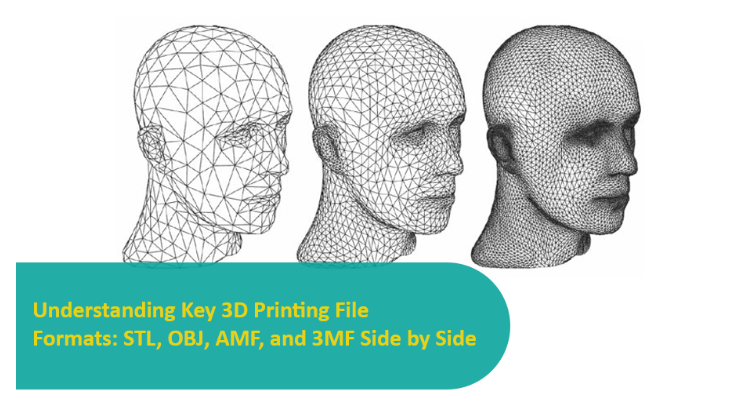
STL: The Pioneering Standard
1987 – a time when hairstyles were big, and the concept of 3D printing was just taking baby steps. This was the year the STL file format was born, thanks to the innovative minds at 3D Systems Inc. They developed STL (which stands for Stereolithography, or Standard Triangle Language) for their first 3D printer. Since then, STL has become something of a legend in the 3D printing world.
Characteristics of STL Files
Imagine STL files as a digital sculptor. They work by breaking down your 3D model into a series of tiny triangles, covering every surface like a mesh. This approach is a bit like using tiny building blocks to approximate the shape of your model. The more triangles you use, the smoother and more detailed your final print is going to be.
Advantages and Limitations
On the plus side, STL's simplicity is its biggest charm.
But, STL has its limitations. Remember those triangles? Well, they can only capture the surface geometry of your model. They don’t include color, texture, or other fancy details. Plus, if you're all about precision and intricate details, STL might leave you wanting more. Its approximation with triangles means you might lose some of the finer elements of your design, especially in complex models.
OBJ: The Versatile Alternative
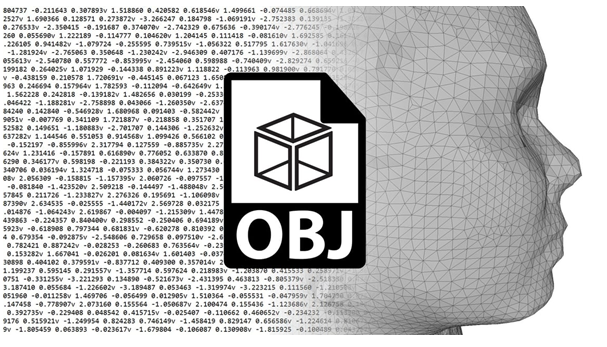
Step aside STL, and let's shine the spotlight on OBJ, the versatile contender in the 3D modeling world. Born from the realms of advanced computer graphics, OBJ has a flair for flexibility that extends well beyond the boundaries of 3D printing.
In the broader world of 3D applications, OBJ is a bit of a celebrity. Its uses range from detailed model creation in video games and movies to intricate architectural visualizations. This format is like a chameleon, adapting effortlessly to various requirements across different industries. It’s not just about printing a model; it’s about bringing complex, richly detailed 3D creations to life in a virtual space.
Properties and Complexities
Now, let’s dive into the nitty-gritty of what makes OBJ really stand out. Imagine OBJ as a skilled artist, capable of capturing not just the shape of your model but also its texture, color, and even the very essence of its material. This format can store detailed information about a model's surface, such as where it should be shiny, matte, or even transparent.
What’s more, OBJ files can handle a diverse range of geometric shapes. Unlike STL, which relies solely on triangles, OBJ is fluent in multiple geometric languages – it can speak in polygons, free-form curves, and surfaces. This means you get a much more accurate representation of complex shapes and surfaces.
However, with great power comes great complexity. OBJ files can be quite intricate, storing a wealth of information that goes beyond simple 3D printing needs. This complexity means they can be larger in size and might require more powerful software to process them efficiently. Plus, they might be a bit of an overkill for simple 3D printing tasks, like printing a basic prototype or a straightforward part.
AMF: Advanced Manufacturing File Format
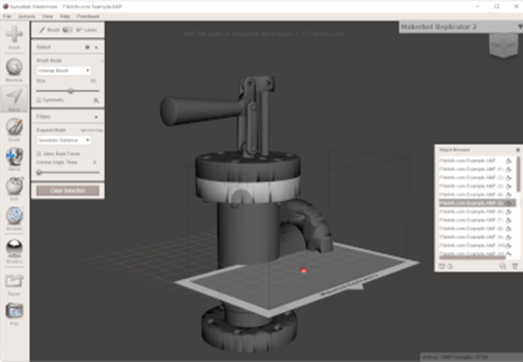
AMF (Additive Manufacturing File Format), often hailed as the next-gen successor to the venerable STL.
Picture AMF as the new kid on the block who's learned a few extra tricks from the older STL. Developed with an eye towards addressing some of STL's limitations, AMF stepped onto the scene with a promise of bringing more to the table. It's like upgrading from a basic phone to a smartphone – there are a lot more features to play with.
AMF is like STL’s smarter cousin. While STL could only describe the surface geometry of objects using triangles, AMF takes it several notches higher. It brings color, materials, and even multiple textures into the mix. Imagine a 3D model not just as a shape but as a full-fledged object with varied colors and materials – that’s the kind of detail AMF is capable of handling.
Another leap forward is how AMF handles geometry. It uses curved triangles, allowing for more accurate and intricate representations of curved surfaces. This means smoother prints with fewer of those jagged edges that STL sometimes leaves behind.
Features and Industry Support
AMF is not just about aesthetics, though. It also supports more technical features, like lattice and gradient structures, which can be crucial for specific engineering applications. These features open up new possibilities in lightweighting and material efficiency, essential in sectors like aerospace and automotive.
But here’s the catch – despite its advanced features, AMF hasn’t quite caught on like wildfire. The reason? It’s a bit like having a super advanced gadget that most people don’t know how to use or don’t need all the features of. The 3D printing industry is still cozy with STL, and moving to a new format takes time and effort. Plus, not all slicing software and printers are fully geared up to take advantage of everything AMF offers.
3MF: The Future of 3D Printing Files?
The 3MF file format is like a Swiss Army knife – versatile, packed with features, and surprisingly compact. One of its standout features is its ability to encapsulate not just the model's geometry, but also rich information like color, texture, and even printing directions, all in a single file. Imagine being able to store not just the sculpture but also its color palette, sheen, and the instructions on how to sculpt it – that's 3MF for you.
Another significant advantage is its use of a compressed ZIP format. This means 3MF files are not only more comprehensive in the information they carry but also efficient in size. It’s like packing an entire wardrobe into a carry-on suitcase – everything you need in a compact, easy-to-handle package.
Current Adoption and Prospects
Now, how's the world responding to 3MF? Well, it's gaining momentum. More and more software and hardware in the 3D printing realm are embracing 3MF, recognizing its potential to make 3D printing processes smoother, more detailed, and more reliable. However, it’s not an overnight sensation – change takes time, especially in a field as diverse and established as 3D printing.
But the prospects look bright. With its robust capabilities and the backing of some of the biggest names in the industry, 3MF is well-positioned to become the new standard. It’s like watching a rising star in the music world – not quite at the top of the charts yet, but with the talent and support to get there soon.


